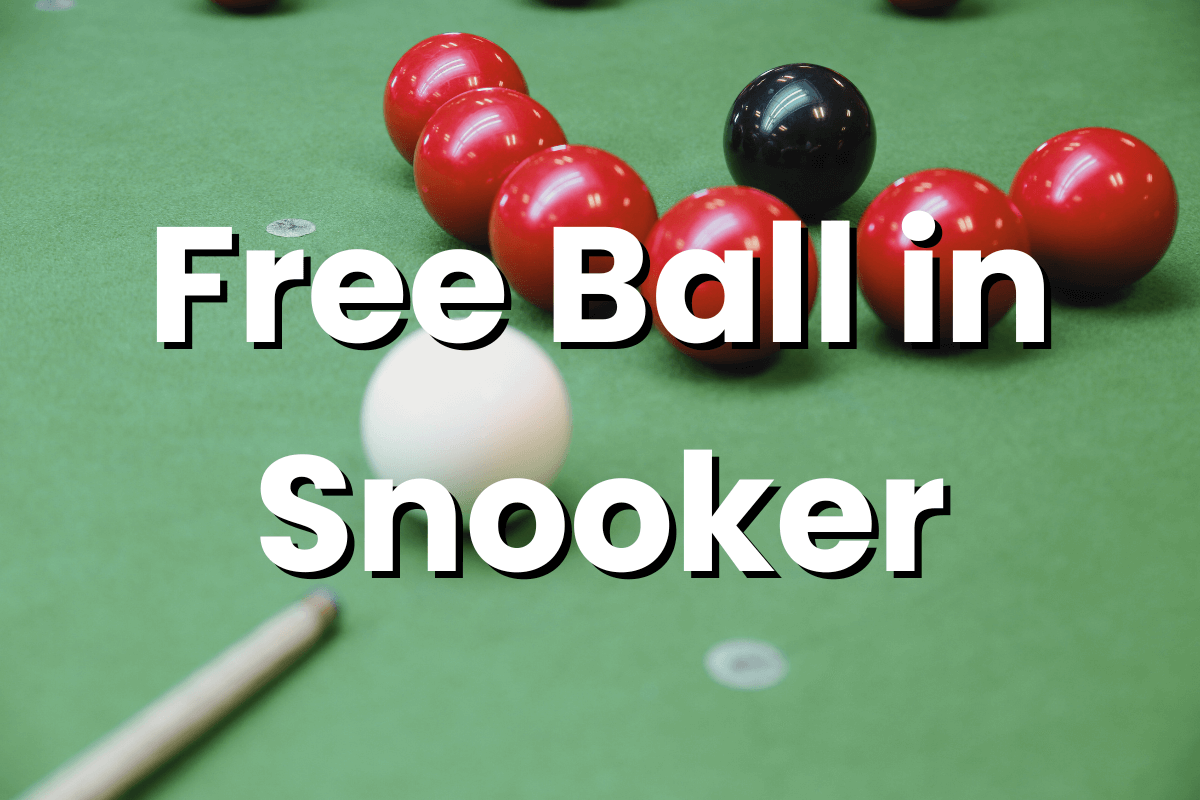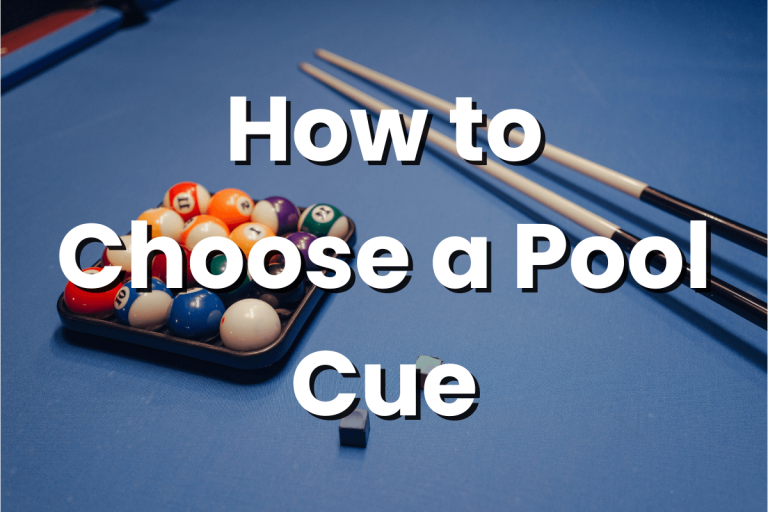Mastering the Free Ball in Snooker | Unlock the Secrets (2024)
Understanding the rules like the “free ball in snooker” can profoundly influence your game. This article aims to demystify the concept of the free ball in snooker, guiding you through its significance and strategic advantages. As we unfold the layers of this crucial rule, you’ll discover how mastering the free ball can elevate your performance and decision-making on the snooker table. Prepare for a journey filled with insights, tips, and expert advice to help you leverage the free ball in snooker to your benefit.
What Exactly is a Free Ball in Snooker?
In snooker, a Free Ball is a unique situation that arises following a foul when the player cannot hit both sides of any of their own ‘on’ balls directly. ‘On’ balls are the balls the player is supposed to target as per the rules of sequence and play. This situation typically occurs when the ‘on’ ball is completely blocked by an opponent’s ball.
When a foul leaves a player snookered, the referee may grant a Free Ball, offering an edge to the fouled player. This allows them to nominate any ball as the ‘ball on’ for their next shot. This nominated ball, once potted or used in a combination shot, counts as the ‘on’ ball, but only scores the points of the original ‘on’ ball. For example, if the ‘on’ ball is red (worth one point) and the player nominates and pots a yellow as the Free Ball, they earn one point, not the yellow’s usual two, and then proceed to target a color ball. Essentially, the Free Ball provides a strategic opportunity to continue scoring without directly targeting the ‘on’ ball.
It’s important to note that the Free Ball is not an opportunity to score additional points directly. Instead, it provides the player with a chance to continue their turn at the table, potentially paving the way to score more points in that break.
Scenarios leading to a Free Ball can vary, but common instances include:
- After a Foul: If a player commits a foul the balls end up positioned such that the opponent is snookered.
- Direct Blocking: If another ball obstructs the direct line of play to both sides of any ‘on’ ball.
- Insufficient Space: If the balls are so close together that the player cannot strike the ‘on’ ball directly without committing a foul.
How to Identify a Free Ball Situation
Identifying a Free Ball situation in snooker requires a keen understanding of the game’s rules and a sharp eye for the positioning of the balls on the table. Here’s a step-by-step guide to help you recognize a Free Ball scenario, along with visual cues, referee signals, and professional tips to avoid common misjudgments:
Understand the Cue Ball’s Position
After a foul, assess the position of the cue ball. A Free Ball scenario is likely if the cue ball is snookered.
Check for Direct Line of Sight
Verify if there’s a direct, unobstructed line to both sides of any ‘on’ ball. The ‘on’ ball is the ball that the player should legally hit next according to the game’s sequence.
Referee’s Assessment
The referee will closely inspect the table. Watch for the referee’s assessment, as they are the authority on whether it’s a Free Ball situation.
The referee will signal a Free Ball by announcing it. In professional matches, this is clear and audible. In casual games, ensure you have a mutual understanding of the signs used to indicate a Free Ball.
Visual Cues
Observe the positioning of obstructing balls. If any ball other than the ‘on’ ball is directly blocking your path to hit the ‘on’ ball on both sides, it’s a potential Free Ball situation.
Professional Tips to Avoid Misjudgments
Seek Clarification: In informal games, if there’s any doubt, discuss with your opponent or have an impartial third party make the call.
Visualize the Shot: Before deciding, mentally visualize the trajectory of the cue ball towards the ‘on’ ball. If you see any potential blockage, it might be a Free Ball.
Stay Updated: Rules can have minor variations based on the tournament or the governing body. Ensure you’re aware of the specific rule set you’re playing under.
Free Ball Rule in Snooker
The Free Ball rule in snooker is an essential regulation that offers a remedy in situations where a player is unfairly disadvantaged by a foul. This section provides an in-depth explanation of the Free Ball rule, its origins, its strategic significance in the game, and the official wording from recognized snooker governing bodies.
Origins and Purpose
The Free Ball rule was introduced to address situations where a player, due to a foul by the opponent, ends up in a position where they are snookered and cannot directly hit both sides of any ‘on’ ball. The rule aims to:
- Prevent Unfair Advantage: Ensure that a player is not unduly penalized due to their opponent’s foul.
- Maintain Continuity of Play: Provide a fair opportunity to continue scoring, maintaining the flow and competitive balance of the game.
Strategic Influence
The introduction of a Free Ball can dramatically alter the course of a frame. Its strategic implications include:
- Scoring Opportunities: It offers the fouled player a chance to score and potentially compile a substantial break, even when they seem to be at a disadvantage.
- Tactical Play: Players may strategically play for a Free Ball situation when snookered, especially if potting the ‘on’ ball is exceptionally challenging.
- Psychological Impact: The swing in momentum can affect the morale and concentration of both players, often shifting the psychological balance of the match.
The Rule’s Wording
The official wording of the rule, as per the World Professional Billiards and Snooker Association (WPBSA), is as follows:
“If the cue ball is snookered after a foul, the referee shall declare a ‘Free Ball.’ If the player nominates and pots a ball that is not ‘on,’ it shall be regarded and scored as if it were the ball ‘on.’ However, if the player nominates and pots the ball ‘on,’ it shall then be respotted.”
This wording encapsulates the essence of the Free Ball rule, clearly outlining the conditions under which it is applied and its subsequent proceedings.
Strategic Mastery: Leveraging the Free Ball
A Free Ball situation in snooker presents a unique opportunity to gain an advantage and potentially turn the tide of a frame. Here are strategies and tips to maximize the potential of a Free Ball situation, as well as common pitfalls to avoid.
Strategies and Tips
Choose the Right Ball: Assess all possible options before nominating your Free Ball. Consider not just the immediate score, but also the position of the balls for the next shot.
Plan Multiple Shots Ahead: Think beyond the Free Ball. Plan your subsequent shots, aiming to position the cue ball to enable a break-building sequence.
Use the Free Ball to Gain Position: If potting a high-value color is risky, use a lower-value color as the Free Ball to maneuver the cue ball into a favorable position for the next shot.
Safety First: If the frame is tight or the table doesn’t offer clear scoring opportunities, use the Free Ball to play a safety shot, placing your opponent in a difficult position.
Common Pitfalls to Avoid
Rushing the Shot: Take your time. A Free Ball situation can be a turning point in the game, and rushing your decision or shot can lead to mistakes.
Overlooking the ‘On’ Ball: In the excitement of having a Free Ball, don’t forget about the original ‘on’ ball. Remember, potting it directly is still an option and sometimes the best one.
Ignoring the Table Layout: Be mindful of the positioning of all balls on the table. A successful Free Ball shot is not just about potting the nominated ball but also setting up the next shot.
Neglecting Safety Play: In situations where the layout isn’t conducive to a high-scoring break, consider playing a safety shot to maintain tactical advantage.
Underestimating the Opponent’s Capabilities: Remember, your opponent will get their chance too. Ensure your play doesn’t leave them with an easy setup should you miss your shot.
Conclusion
The Free Ball rule in snooker is crucial for strategic advantage and turning the game in your favor. It’s a testament to the depth and intricacy of snooker, highlighting the importance of skill, strategy, and a deep understanding of the rules. Embrace continuous learning and respect the nuances of the game to not just play, but to excel. Remember, every rule mastered is a step closer to becoming a formidable player on the snooker table.
FAQs
When can a player be awarded a Free Ball?
A player can be awarded a Free Ball after their opponent fouls and leaves them in a position where no legal ball can be hit on both sides directly. It’s a rule to ensure fairness when a player is snookered due to a foul.
Can you snooker behind a Free Ball?
Yes, you can snooker behind a Free Ball. If a Free Ball is awarded and the player chooses to nominate a ball as the ‘on’ ball, they can then use this nominated ball to snooker their opponent. However, it’s important to remember that the usual rules of a legal shot still apply, and the cue ball must first hit the nominated Free Ball.
How to get a Free Ball in Snooker?
A Free Ball is awarded in snooker when a player commits a foul and the resulting position of the balls leaves the opponent snookered, unable to hit both sides of any ‘on’ ball directly. The most common way to achieve this is by playing a shot that not only fouls but also positions the cue ball in such a way that it is obstructed by other balls, preventing a direct shot on the ‘on’ ball by the opponent. It’s important to note that the awarding of a Free Ball is at the discretion of the referee, based on their assessment of the table after the foul.
Does the Free Ball have to be potted for the turn to continue?
No, potting the Free Ball is not a requirement for the turn to continue. If a player is awarded a Free Ball, they may nominate any color as the ‘on’ ball. If this nominated ball is potted, they score the value of the original ‘on’ ball and continue their turn. However, if the player fails to pot the Free Ball, their turn ends unless they’ve successfully played a legal safety shot, ensuring that the cue ball and the nominated Free Ball make contact and that no foul is committed during the shot.







